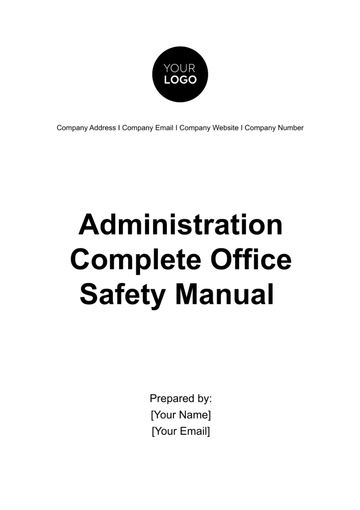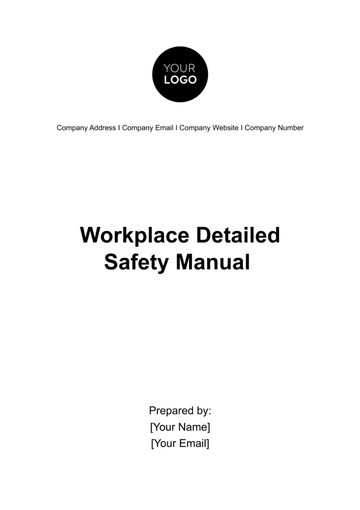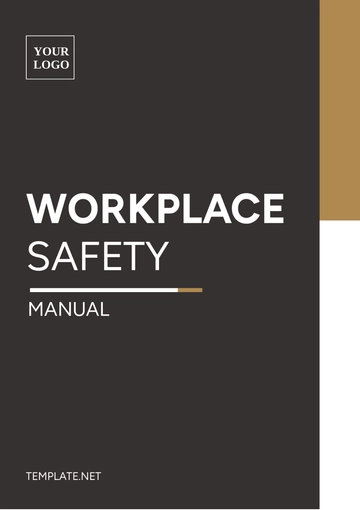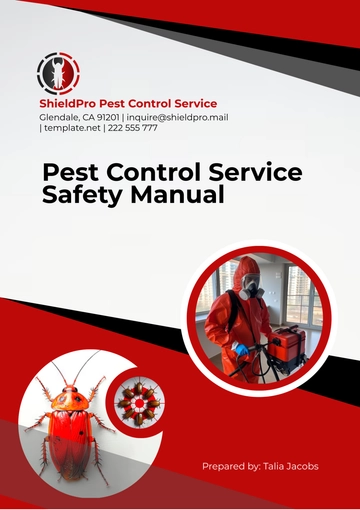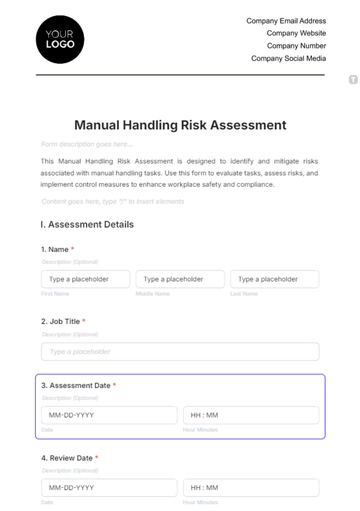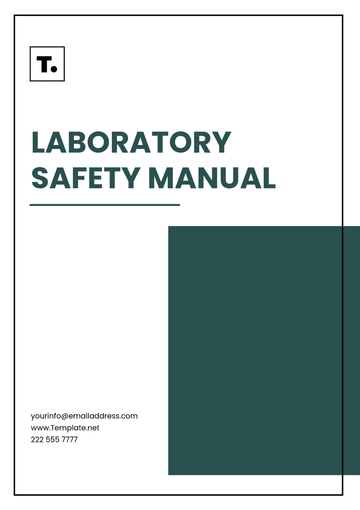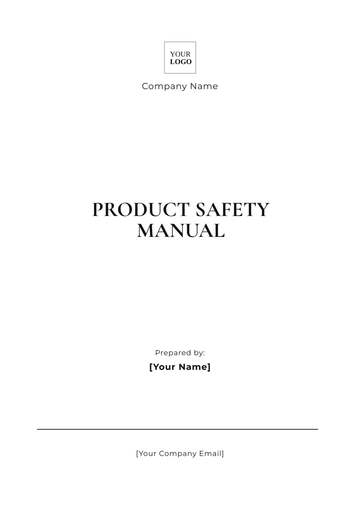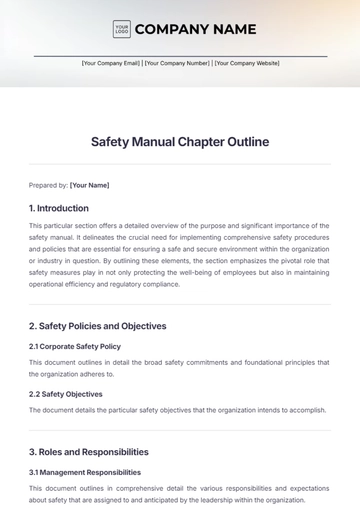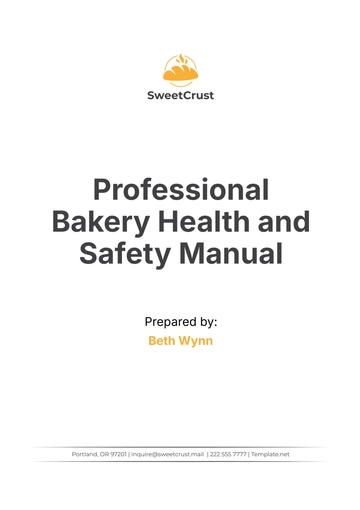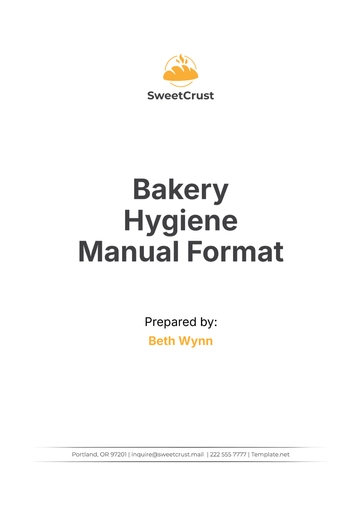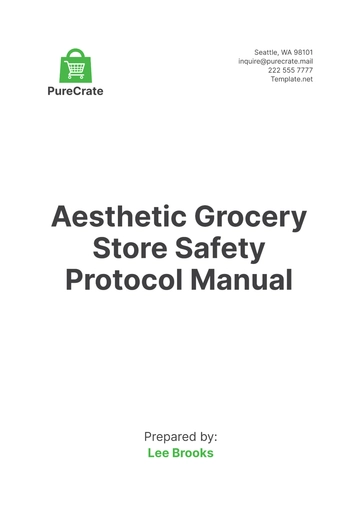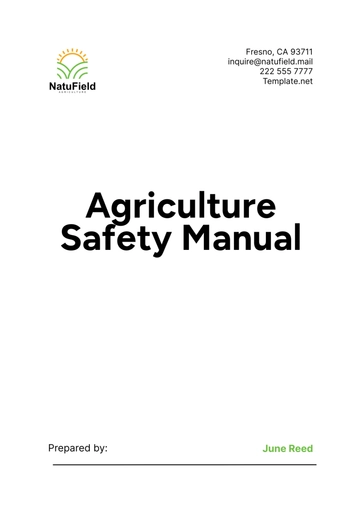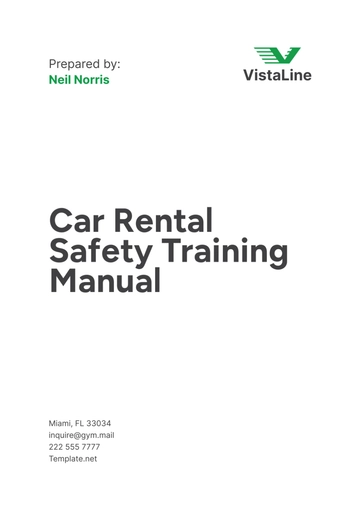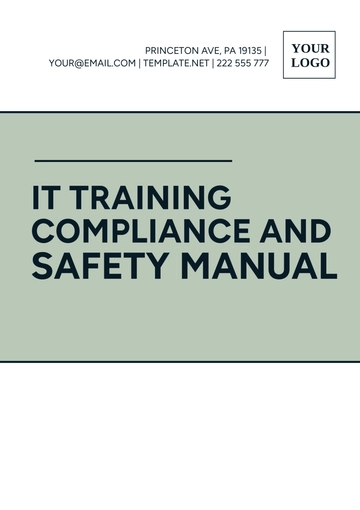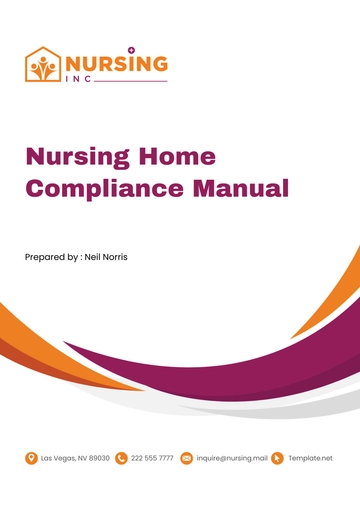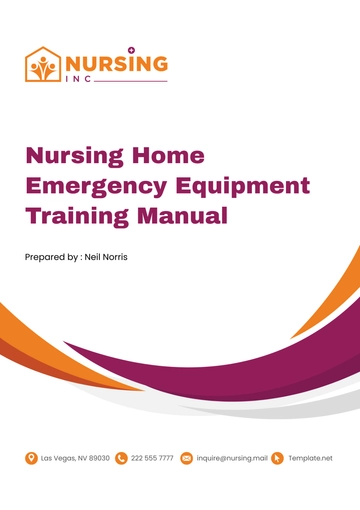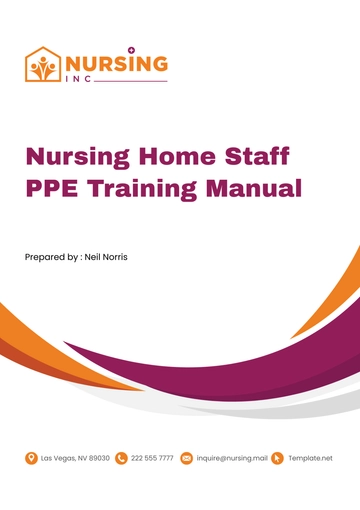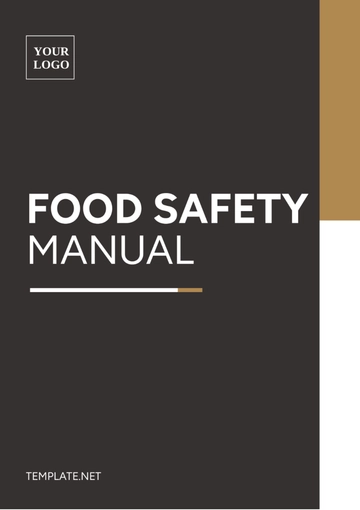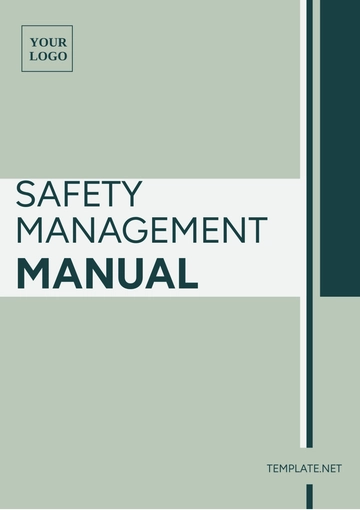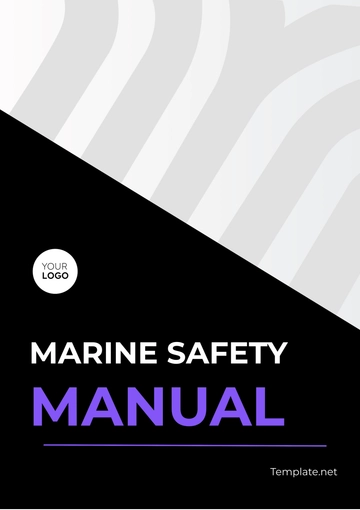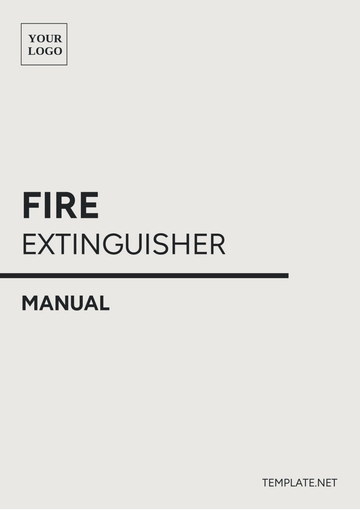Free Health & Safety Communication Manual
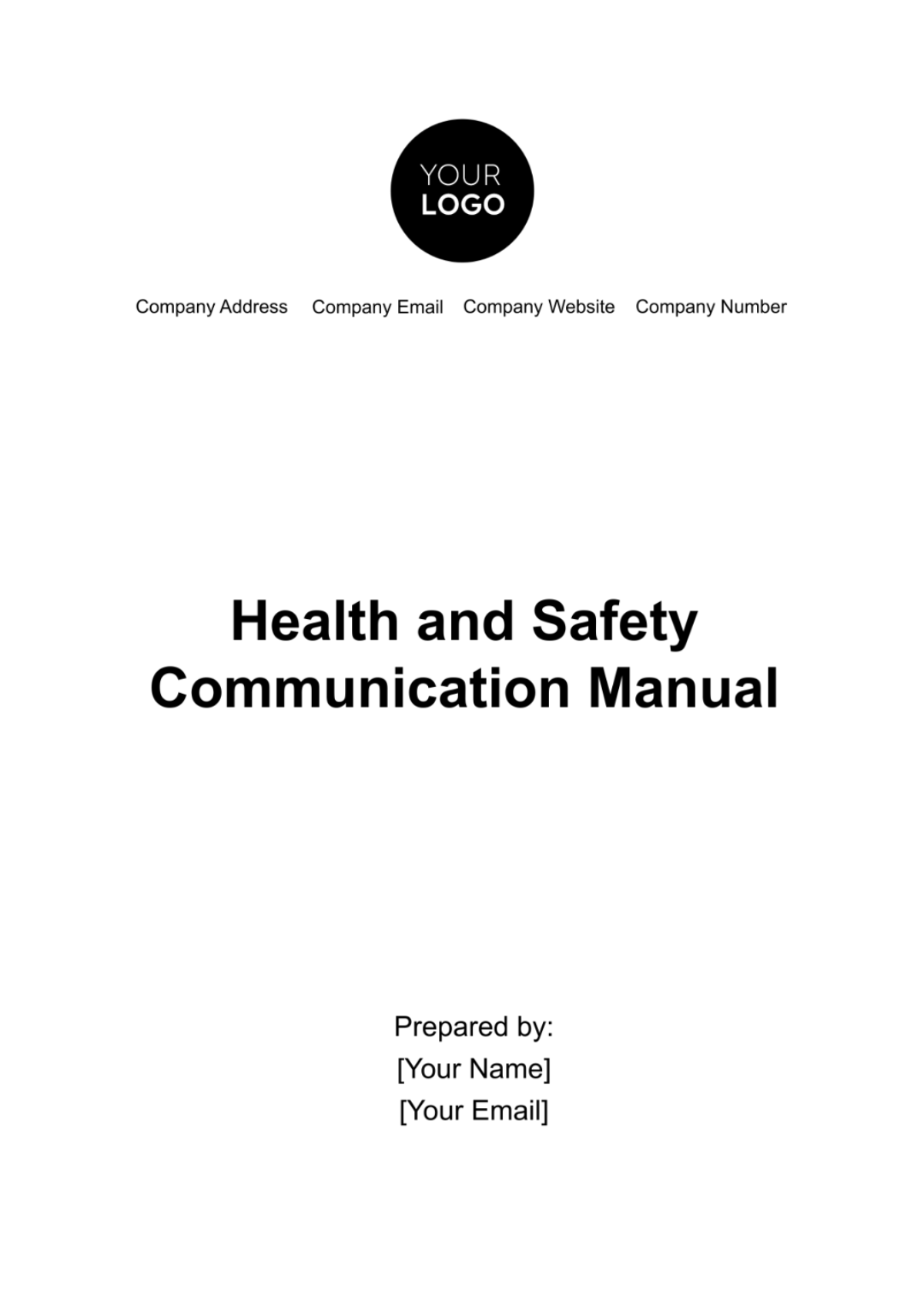
Introduction
A. Purpose of the Manual
Welcome to [Your Company Name]'s Health and Safety Communication Manual. This comprehensive guide has been crafted with the utmost consideration for the well-being and safety of our valued employees. At [Your Company Name], we prioritize creating a work environment that fosters health, security, and overall well-being. The purpose of this manual is multifold:
Communication of Policies: This manual serves as a central repository for communicating [Your Company Name]'s health and safety policies. It outlines our commitment to maintaining the highest standards of safety across all operations.
Emergency Procedures: Clear and concise protocols for emergency situations are outlined to ensure a swift and coordinated response. Whether it's a medical emergency, security concern, or evacuation, this manual provides the necessary guidelines.
Risk Assessment and Control: To maintain a safe workplace, we provide methodologies for identifying hazards, evaluating risks, and implementing effective control measures. This section underscores our commitment to proactive risk management.
Training and Education: A well-informed workforce is a safer workforce. This manual details our training programs, ensuring that employees are equipped with the knowledge and skills necessary to navigate potential risks.
Communication Protocols: Establishing effective communication channels is crucial. This section outlines procedures for incident reporting and details safety meetings to facilitate open dialogue on safety-related matters.
Health and Safety Policies
A. [Your Company Name] Health and Safety Policy
Policy Statement:
At [Your Company Name], we are committed to maintaining the highest standards of health and safety. Our policy includes:
Prioritizing the well-being of employees, contractors, and visitors.
Complying with all relevant health and safety laws and regulations.
Continuously improving our processes to identify and mitigate potential risks.
Providing the necessary resources for effective implementation of safety measures.
Responsibilities of Employees:
Every employee is responsible for:
Adhering to safety policies and procedures.
Reporting hazards and unsafe conditions promptly.
Participating in training programs to enhance safety awareness.
Following guidelines during emergencies.
Responsibilities of Management:
Management is committed to:
Establishing and enforcing safety policies.
Providing resources for training and safety measures.
Conducting regular audits to assess and improve safety.
Communicating effectively regarding health and safety matters.
B. Compliance with Regulations
To ensure compliance with applicable regulations and standards:
Regular audits will be conducted to assess compliance.
Necessary adjustments to policies and procedures will be made to align with changing regulations.
Employees are expected to familiarize themselves with relevant regulations and report any non-compliance.
Risk Assessment
A. Identifying Hazards
Methods for Hazard Identification:
Employees are encouraged to actively participate in identifying potential hazards. The following methods should be employed:
Regular workplace inspections.
Reporting unsafe conditions or behaviors promptly.
Participating in hazard identification training programs.
Reporting Hazards:
To report hazards, use the [Your Company Name] Hazard Report Form available on [Your Company Name]'s intranet or contact [Your Company Name] Safety Officer at [Safety Officer Contact].
B. Risk Evaluation
Risk Matrix:
Use the following risk matrix to assess the severity and likelihood of identified risks:
Severity/Likelihood | Low | Medium | High |
Low | 1 | 2 | 3 |
Medium | 4 | 5 | 6 |
High | 7 | 8 | 9 |
Criteria for Risk Evaluation:
Low Risk (1-3): Routine measures and regular monitoring.
Medium Risk (4-6): Additional control measures and periodic reviews.
High Risk (7-9): Urgent action required, immediate controls, and management notification.
C. Control Measures
Hierarchy of Controls:
Elimination/Substitution: Where possible, eliminate or substitute the hazard.
Engineering Controls: Implement physical changes to reduce exposure.
Administrative Controls: Develop procedures to limit exposure.
Personal Protective Equipment (PPE): Use appropriate PPE as a last resort.
Implementation of Control Measures:
The [Your Company Name] Safety Team is responsible for overseeing the implementation of control measures. Regular audits will be conducted to ensure effectiveness.
Training and Education
A. Employee Training
Training Programs:
New Employee Orientation: Introduces basic safety policies and procedures.
Annual Safety Training: Covers updated policies, emergency procedures, and hazard identification.
Frequency of Training:
New Employee Orientation: Conducted upon hiring.
Annual Safety Training: Conducted annually, with refresher sessions as needed.
B. Emergency Response Drills
Schedule for Drills:
Emergency response drills will be conducted regularly, following this schedule:
Fire Drills: Quarterly
Evacuation Drills: Bi-annually
Evaluation and Improvement
Drill performance will be evaluated, and improvements will be made based on feedback and identified areas of enhancement.
Communication Protocols
A. Reporting Incidents
Procedure for Incident Reporting:
Employees must follow the steps below to report incidents:
Immediate Action: Attend to any immediate safety concerns.
Notification: Report the incident to the supervisor or manager on duty.
Documenting: Complete the [Your Company Name] Incident Report Form available on [Your Company Name]'s intranet.
Safety Officer Notification: Notify the [Your Company Name] Safety Officer at [Safety Officer Contact] for immediate action.
Incident Report Form:
The [Your Company Name] Incident Report Form collects essential details, including:
Date and time of the incident.
Location and description of the incident.
Names and contact information of involved parties.
Witnesses, if any.
Immediate actions taken.
B. Safety Meetings
Frequency of Safety Meetings:
Regular safety meetings will be conducted to discuss current safety issues, updates, and employee feedback. Meetings will occur quarterly, and all employees are expected to attend.
Agenda for Safety Meetings:
Meetings will cover topics such as:
Recent incidents and lessons learned.
Updates on safety policies and procedures.
Employee suggestions and feedback.
Review of emergency procedures.
Recognition of outstanding safety practices.
Personal Protective Equipment (PPE)
A. [Your Company Name] PPE Policy
Types of Required PPE:
Employees are required to use the following PPE based on their job roles:
Safety helmets.
High-visibility vests.
Protective gloves.
Safety goggles.
Proper Use and Maintenance:
Employees must:
Wear PPE as instructed.
Inspect PPE before each use.
Report damaged or malfunctioning PPE.
Follow proper cleaning and storage procedures.
Health and Wellness Programs
A. Employee Assistance Programs
Available Resources:
[Your Company Name] provides the following resources to support employee well-being:
Counseling services: Contact [Counseling Service Provider] at [Counseling Service Contact].
Mental health workshops: Regular sessions covering stress management, resilience, and work-life balance.
Employee Assistance Hotline: [Employee Assistance Hotline Number] for confidential support.
Confidentiality Policies:
All interactions with employee assistance programs are strictly confidential. Information will not be disclosed without the employee's explicit consent, ensuring a safe and supportive environment.
B. Promoting Healthy Lifestyles
Wellness Initiatives:
[Your Company Name] actively promotes healthy lifestyles through:
Fitness programs: On-site gym facilities or subsidized gym memberships.
Healthy eating initiatives: Cafeteria options focused on nutritious choices.
Workshops on ergonomics and healthy workspace practices.
Incident Investigation
A. Reporting and Investigation
Procedure for Incident Investigation:
Immediate Action: Secure the incident scene to prevent further harm.
Notification: Notify the [Your Company Name] Safety Officer at [Safety Officer Contact].
Investigation Team: Form an incident investigation team consisting of [Investigation Team Members].
Gathering Information: Collect relevant information, including witness statements, photos, and records.
Analysis: Conduct a thorough analysis to determine root causes.
Corrective Actions: Implement corrective actions to prevent recurrence.
Documentation: Document the investigation process and outcomes.
Incident Investigation Team:
[Investigation Team Leader]: [Contact Information]
[Team Member 1]: [Contact Information]
[Team Member 2]: [Contact Information]
Safety Performance Metrics
A. [Your Company Name] Safety Metrics
Key Performance Indicators (KPIs):
Incident Rate: Number of incidents per month.
Near Miss Reporting Rate: Frequency of reported near misses.
Training Compliance: Percentage of employees completing required safety training.
Response Time to Incidents: Average time taken to respond to incidents.
Benchmarking:
Regular benchmarking against industry standards will be conducted to ensure [Your Company Name]'s safety performance remains in line with or exceeds best practices.
- 100% Customizable, free editor
- Access 1 Million+ Templates, photo’s & graphics
- Download or share as a template
- Click and replace photos, graphics, text, backgrounds
- Resize, crop, AI write & more
- Access advanced editor
Elevate your workplace safety standards with Template.net's Health & Safety Communication Manual Template. Fully editable and customizable using our intuitive AI Editor Tool, this template streamlines the process of creating comprehensive safety manuals tailored to your organization's needs. Safeguard your team and premises effectively with Template.net's innovative solution.

